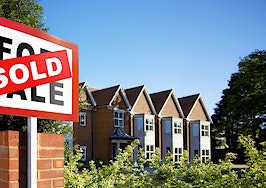Lumber prices have been acting like a cryptocurrency for the last few months, as they first skyrocketed up before finally coming down (a bit). In all my years in real estate, I have never seen anything like this — and I suspect that sentiment is common.
From the beginning of the pandemic, lumber prices skyrocketed over 200 percent, and at its peak, they were increasing the costs of building new houses by a full $36,000.
Fortunately, lumber prices have come down about 40 percent since their May 2021 peak. But even still, the cost of lumber is still up 175 percent from where it was at last year. So what on earth happened and is currently happening?
Supply down
As any economics 101 class will teach, prices are affected by supply and demand. And right now, supply is way down while demand is way up. The supply of lumber was interrupted by the same thing that interrupted pretty much everything else: COVID-19. As The Deseret News noted:
“A lumber industry that saw contraction and consolidation following the 2008 housing crisis and subsequent Great Recession was further hamstrung by forced shutdowns and workforce reductions under rules aiming to curb the rise of COVID-19.”
Many mills simply went offline when the pandemic started, and then they only reopened gradually. Indeed, the main reason that lumber prices are starting to (slowly) come back down to earth is because the mills are mostly back up and running at full steam again.
The reason prices haven’t come fully back down to earth is because demand is still through the roof.
Demand up
When the recession began, it was almost taken for granted that the real estate market would collapse. Of course, not only did this not happen, but instead, the real estate market got hotter than ever — and then it got even hotter.
Even before the pandemic, there was a housing shortage in the United States. After The Great Recession of 2008, housing starts never returned to what they were before the crisis.
This shortage was then exacerbated by the lockdowns which delayed many construction projects and prevented others from getting out of the planning stages. Then add historically low interest rates to the housing shortage mentioned above, and it sent demand for properties through the proverbial roof.
And thus, now we have a real estate market with historically low inventory.
What this means is that there is every incentive to build more and rehab any dilapidated real estate. Building and rehab demand lumber, and more demand means a higher price. And in this case, a much higher price.
A little inflation as the cherry on top
On top of this supply and demand mess, there is economy-wide inflation, which adds the “cherry on top” to the extremely high lumber prices.
During the COVID-19 crisis, the Federal Reserve “printed” an enormous amount of money. M3 (a metric for the amount of money in circulation) increased over 30 percent in 2021 alone!
That large an increase in the money supply is bound to have consequences, and those consequences are being seen more clearly now. In May, the Consumer Price Index increased five percent from the year before. Some of this inflation is being felt in lumber prices.
What agents should take away from this
Lumber prices will likely normalize, at least partially, slowly but surely as the mills are back online and catching up with back orders. Even still, there is no sign that housing demand will cool off anytime soon, and at the same time, inflation is picking up.
So don’t expect lumber prices to return to 2019 levels. Nor should we expect the real estate market as a whole to cool off in the near future unless the Fed increases interest rates. Whether they do this or not is something to monitor very closely.
Indeed, the Federal Reserve’s hand may very well be forced to raise rates even though the economy is sluggish, just as it did in the early 80s. This would definitely cause the housing market to cool off, which in turn would cause lumber prices to drop as well.
Andrew Syrios is a real estate investor and partner in Stewardship Investments and an real estate agent for eXp Realty in the Kansas City metro area. Connect with him on Instagram, Facebook or Twitter.






